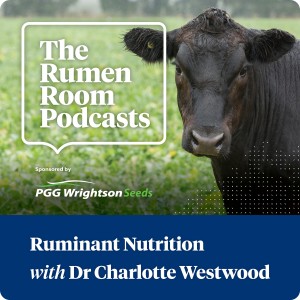
Friday Jul 05, 2024
50. Soil contamination of feeds – any issues for our ruminants?
Ingestion of soil during grazing of pastures and forage crops is a common and unavoidable event. Soil contamination of silage and baleage is another challenge that we sometimes need to deal with. Our latest episode explores the whole topic of soil ending up where it doesn’t belong. How much mud and dirt do animals eat during grazing? What factors increase risk of animals eating too much soil? Are there any health or nutrition issues we need to think about when animals eat too much mud and dirt? What happens when we get soil contamination of silage? All this and more. We hope you enjoy our latest podcast.
2.25 Overview of content of our current podcast
4.00 How ruminants end up eating soil
4.30 Post-grazing residual management – it’s not only about soil ingestion
6.55 Soil type and structure
9.00 Plant pulling during grazing
11.00 Earthworms – wonderful things but how about those worm casts?
12.45 Hot, dry dusty conditions
13.15 Flood irrigation
13.55 Annual forage crops, including bulb crops (Fodder beet, swedes, turnips)
14.35 Different types of bulb crops and risk of soil ingestion
17.00 Sugar beet and soil tare
18.00 When soil contaminates conserved feeds. Risks for spoilage of silage
23.30 Listeriosis risk when soil-contaminated silage pH is high
25.05 What parts of a feed test reports could indicate the presence of soil in your silage sample?
27.20 Soil ingestion when animals have a depraved appetite and eat soil (pica)
29.20 How much soil do grazing ruminants eat during grazing?
34.45 Potentially good aspects of soil ingestion
39.00 Potentially not so good aspects of soil ingestion.
44.50 Risk of physical damage to the gastrointestinal tract when ruminants eat soil
No comments yet. Be the first to say something!